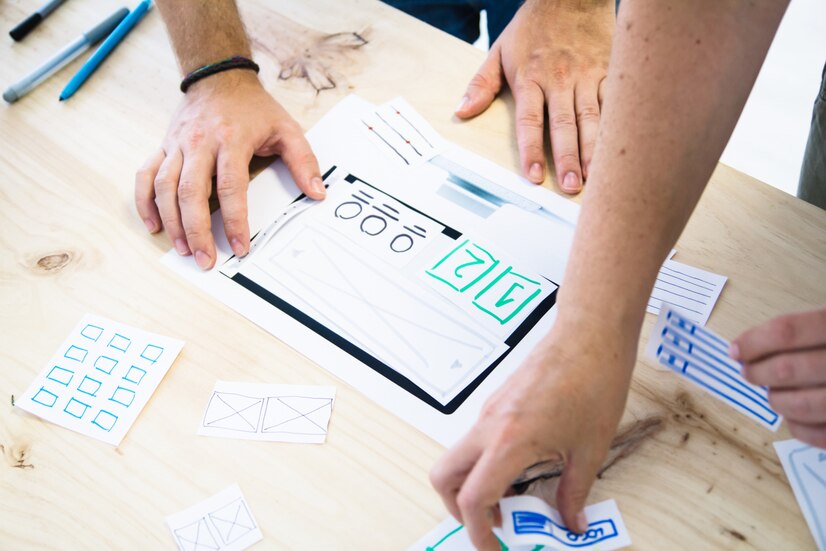Introduction
Empathy, encapsulated in the phrase “try to put yourself in my shoes,” forms the cornerstone of understanding others’ feelings. In UX design, empathy entails catering to users’ emotional and cognitive needs. UI UX design companies adeptly step into users’ shoes to address pain points and solve problems, a practice that resonates profoundly in healthcare design.
The Need for Empathy in Healthcare
Healthcare is a deeply personal and often vulnerable experience. Patients navigate a spectrum of emotions, from fear and uncertainty to hope and relief. By incorporating empathy into healthcare design solutions, we can acknowledge these feelings and build trust between patients and technology.
How UX Design Enhances Empathy
User Experience (UX) design plays a crucial role in enhancing empathy by fostering a deeper understanding of users’ needs, behaviors, and emotions. Here’s how UX design contributes to empathy:
1. User Research
UX designers conduct extensive user research to understand the target audience. This involves interviews, surveys, observation, and other methods to gain insights into users’ goals, motivations, pain points, and preferences. By empathizing with users’ experiences and challenges, designers can create solutions that truly resonate with them.
2. Personas and User Stories
Creating personas in healthcare designs help the designers to personify their target users, complete with their backgrounds, behaviors, and goals. User stories further delve into the specific scenarios and tasks users engage in. By empathizing with these fictional representations of real users, design agency can better understand their needs, design products that address them effectively and create better healthcare design solutions.
3. Empathy Mapping
UI UX design companies often use empathy mapping exercises to visualize and understand users’ thoughts, feelings, and actions. This involves identifying what users see, hear, think, feel, and do about a particular product or service.
UX design principles that promote empathy:
User-centered Design
Empathetic UX design revolves around understanding users’ perspectives, needs, and challenges. By prioritizing user-centered design, healthcare interfaces become intuitive, responsive, and tailored to individual patient journeys.
Clear Communication
Effective communication is the linchpin of empathy. Through clear, concise language and intuitive navigation, healthcare UX design ensures that patients comprehend information effortlessly, empowering them to make informed decisions about their health.
Accessibility
Inclusive design lies at the heart of empathy. Healthcare UX embraces accessibility standards, ensuring that digital platforms accommodate diverse user needs, including those with disabilities or language barriers.
Streamlined Workflows
Simplicity breeds empathy. By streamlining workflows and eliminating unnecessary steps, UX design minimizes patient frustration and anxiety, fostering a seamless and compassionate healthcare experience.
Visual Design
Visual cues evoke emotional responses. Thoughtful visual design elements, such as color schemes, imagery, and typography, create a comforting and reassuring atmosphere, instilling confidence in patients as they navigate healthcare interfaces.
Benefits of an Empathetic Patient Experience
An empathetic patient experience yields multifaceted benefits, both for individuals and healthcare providers. Some of the common benefits include:
Enhanced Patient Satisfaction:
– Patients feel understood, valued, and supported.
– Empathetic design fosters a sense of trust and connection with healthcare services.
Improved Patient Engagement:
– Empathetic interfaces encourage active participation and interaction.
– Patients are more likely to engage with healthcare resources and adhere to treatment plans.
Deeper Insights for Healthcare Providers:
– Empathetic design provides valuable insights into patients’ needs, preferences, and behaviors.
– Healthcare providers can tailor their services and interventions to better meet the needs of individual patients.
The need for patient-centric design
A telemedicine platform is designed with empathy at its core. The interface features clear, jargon-free language and intuitive navigation to ensure that patients of all backgrounds can easily access and understand healthcare services. Visual design elements, such as calming colors and imagery, create a welcoming atmosphere that alleviates anxiety and promotes trust.
During virtual consultations, healthcare designers use active listening techniques to demonstrate empathy and understanding towards patients’ concerns. The platform includes built-in features for patients to provide feedback on their experience, ensuring that their voices are heard and valued.
Additionally, the telemedicine platform offers language support and cultural customization options to accommodate diverse patient needs. For example, patients can choose their preferred language for consultations, and the interface adapts accordingly to provide culturally relevant information and resources.
By prioritizing empathy in design decisions, this telemedicine platform creates a compassionate and inclusive healthcare experience that resonates with patients on a deep emotional level.
Conclusion
In healthcare UX, empathy is not just a buzzword but a fundamental principle that guides the creation of meaningful and transformative patient experiences. By incorporating empathy into UX design strategies such as emotional design, co-design with patients, empathetic feedback mechanisms, and cultural sensitivity, healthcare interfaces can better meet the diverse needs of patients and foster trust, engagement, and satisfaction.
As technology continues to advance, the role of empathy in healthcare design solutions will only become more critical. By embracing empathy as a core value and integrating it into every stage of the design process, we can create healthcare solutions that truly empower and support patients on their care journey.
